Have you ever watched your child playing with blocks? Were you puzzled by their movements and block structures? Well, there is a natural progression through the stages of block play.
As your child develops, they will move through the block-building stages; each builds on the previous skills developed. Let’s look at the stages of block play and when you can expect your child will advance through them.
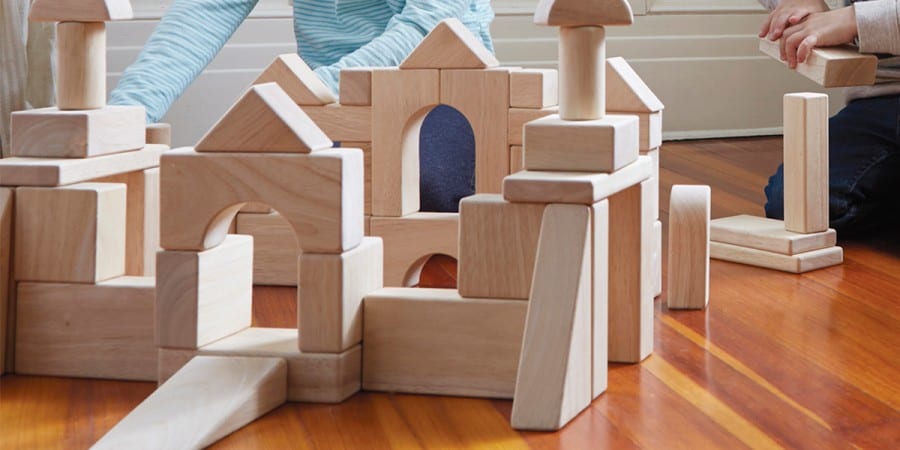
This post is the second in a series all about block play. In the first post, we explained the benefits of block play. If you are reading this article, we hope those benefits resonated with you!
Offering the best blocks to support your child’s current stage helps to ensure a successful block play experience. Furthermore, understanding these block-building stages will help lay the foundation for setting up a block center or block play area.
All children will advance through each of the stages of block play in early childhood as they engage in regular building sessions. Even older children who have not had experience with blocks will still move through the stages only faster. The exception is the first stage, which only applies to babies and young toddlers.
The familiarity of these stages will help you support your children’s block play.
Block Play – Stage 1: Carrying, Exploring, or Prebuilding
The first stage of block play, also known as the carrying or exploring stage, is for young children, such as babies and toddlers. In this phase, blocks are not used for construction. They are instead used to support sensorimotor development.
This is the stage where they learn about the blocks and what they can do. You are likely to see your toddler engaged in the following activities.
- Carry, move, pile, or knock down the blocks.
- Pack, repack, and haul around the blocks.
- Knockdown a tower that you built together.
- Explore the sounds blocks make by dropping them or banging them together.
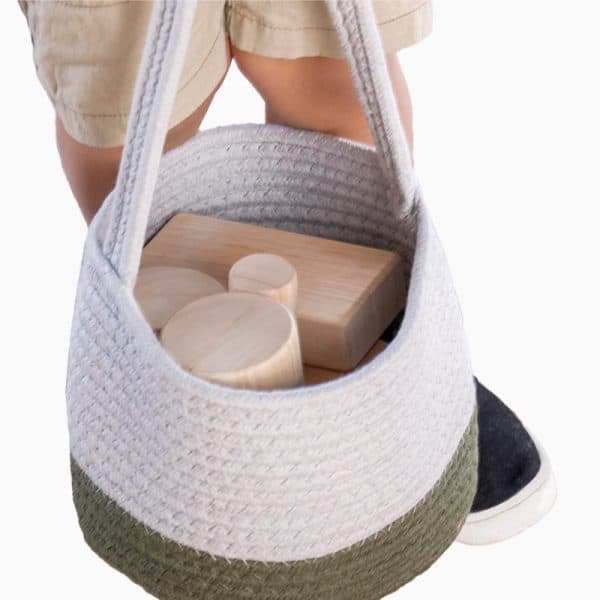
Block Play – Stage 2: Stacking, Rows and Towers or Repetition
Around 2-3 years of age is when the building begins. This stage, known as the stacking, rows, and towers or repetition stage, is when you will see them line up the blocks.
They may stack the blocks one on top of the other for a vertical tower. Or lay them out on the floor in rows, either vertically or horizontally. There will be many repetitions in their “building.” As they repeat patterns until they determine the next step in the block play progression.
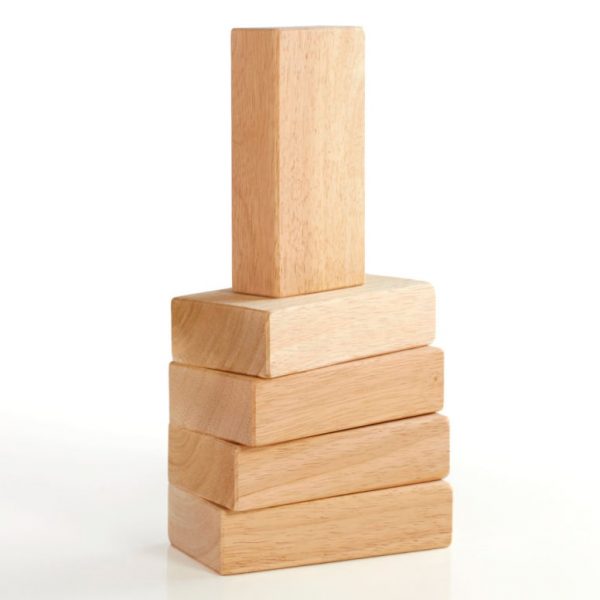
Block Play – Stage 3: Bridges and Passageways
At this stage, 3-4-year olds activate experimentation. Children start by placing two blocks apart to support the third block. This creates a “bridge,” also known as bridging.
Sooner or later, children end up building rows and stacks, adding bridges, and forming passageways. They learn by trial and error how to balance the block so it does not fall off.
Block building also improves their fine motor skills and hand-eye coordination. This is where we see their imagination start to unfold. For example, props such as trucks and cars turn blocks into “roads.”
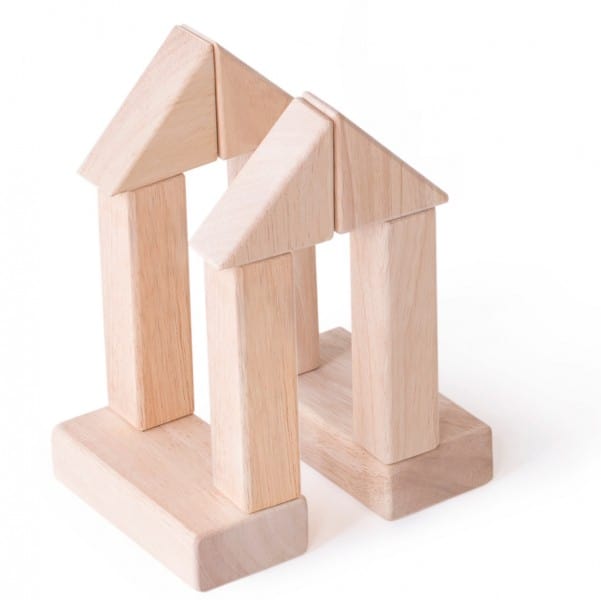
Block Play – Stage 4: Enclosures
By around age 4, after a child uses blocks regularly, they move from building bridges into closing up spaces and creating enclosures. As children advance, you will see their block play expand to take up large areas of space, like your entire living room.
Among the first problems children have to solve occurs during the bridging and enclosures stages. This is when they will first use their spatial awareness skills to discover how to close the areas. As they create these spaces, they will associate them with things such as a barn for the animals or a garage for their cars.
This stage is the beginning phase of dramatic play with blocks. Enclosures and bridges become the scenery for imaginative play with props like dolls, animals, and toy cars.
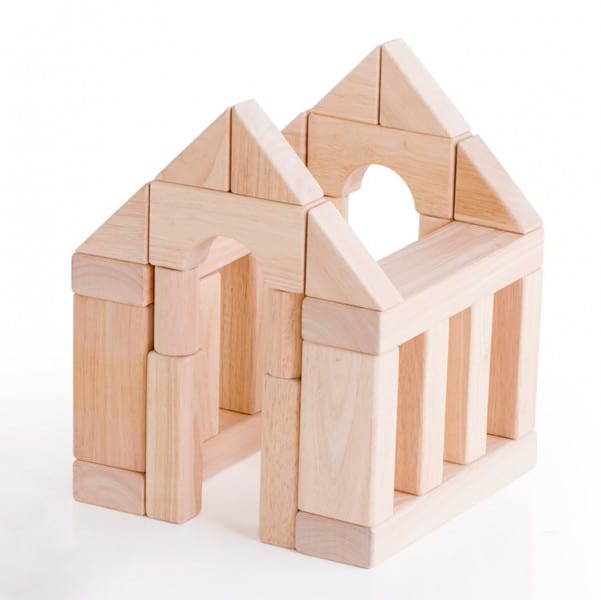
Block Play – Stage 5: Symmetry and Patterns
Symmetry and patterning show up in this stage. Sorting, matching, and creating balance develop as your child builds intricate designs. Symmetry and balance become increasingly important to your child.
Children like to line up different shaped blocks in a pattern. They will use more blocks as their block-building becomes more imaginative.
While you start to see imaginative play take shape in the previous stages, this is where their creativity emerges. Everything becomes a fair game as they add accessories to their structures. It adds to the building dynamics, whether vehicles, dolls, furniture, animals, or “loose parts” like scarves, rocks, or gems.
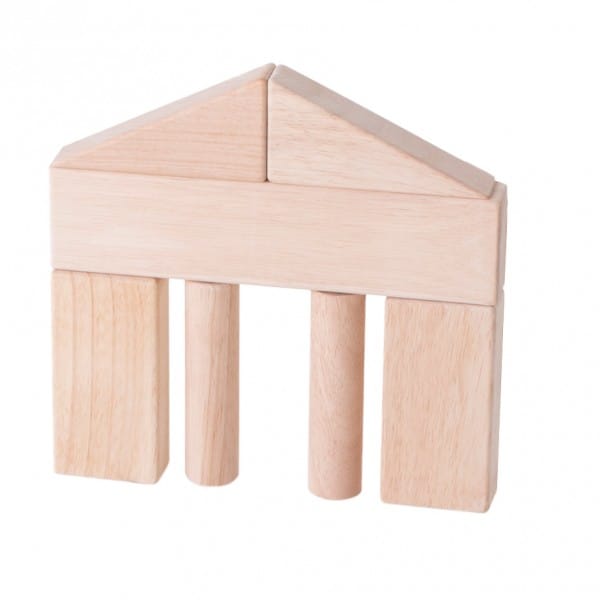
Block Play – Stage 6: Early Representational, Functional and Naming of Structures
At this stage, known as the early representational, functional, or naming structures stage, 4-5-year olds begin to create familiar structures.
Your child’s building becomes more detailed and intentional, requiring planning. They may have named their structures in previous stages but not based on the function of the building. Dramatic play becomes an essential component of their block-building. Children use it to understand the growing world around them.
As your child builds upon previous block skills, they add a variety of blocks and more props. They may work together cooperatively or individually, naturally building their social skills.
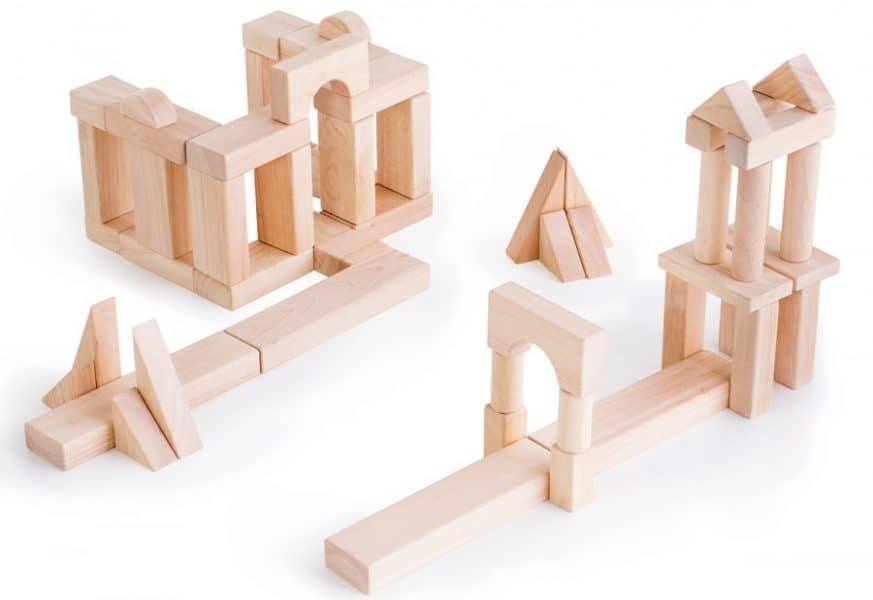
Block Play – Stage 7: Later Representational, Complex and Symbolic
At about school age (5+ years), this stage takes on more complex buildings with elaborate details. With an increase in their dexterity and block play skills, you will see multilevel, curved buildings that sprawl over other toys and structures.
Children will start replicating a specific structure they have seen, like a school, garage, or post office. They will engage in symbolic play as they use the blocks to represent things such as planes, cars, and trains.
Building with blocks stimulates imaginative play, and now their structures become part of the pretend play story. Their cooperative play is also developing, and you will often find them discussing what to build, how to build it, and who will play what role.

In Closing:
We know that as parents, we all want the best for our children. Understanding the 7 stages of block play helps prepare you for the current and future block-building stages your child will encounter.
Keep in mind, children often advance through these stages in order, but not always. Once they have mastered a stage, you may see them moving back and forth between the stages.
Remember, block play creates opportunities for you to get down on the floor with your child and explore the various types of blocks for kids. Have some fun and encourage a kid’s imagination through block play.
